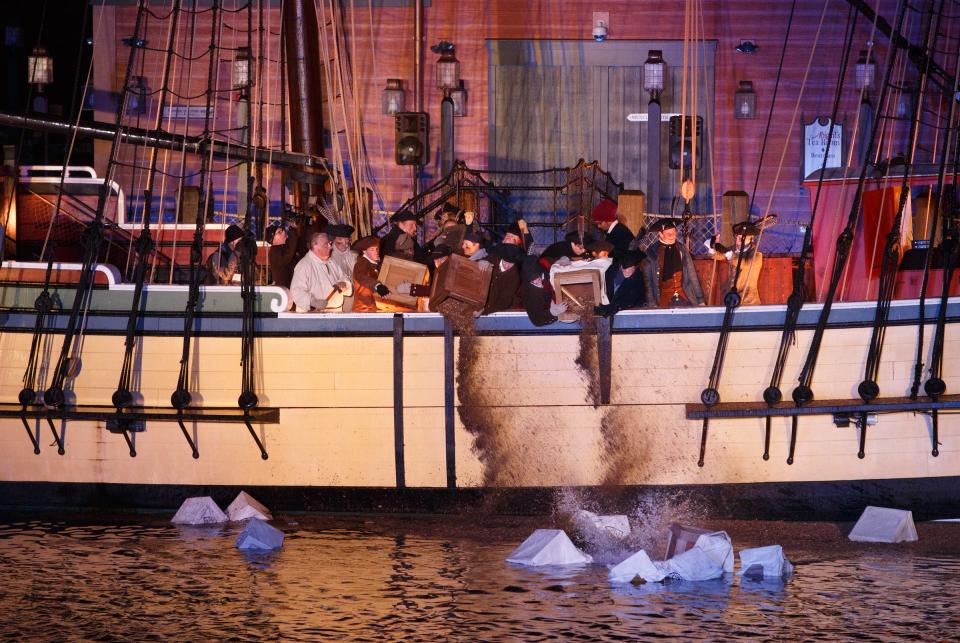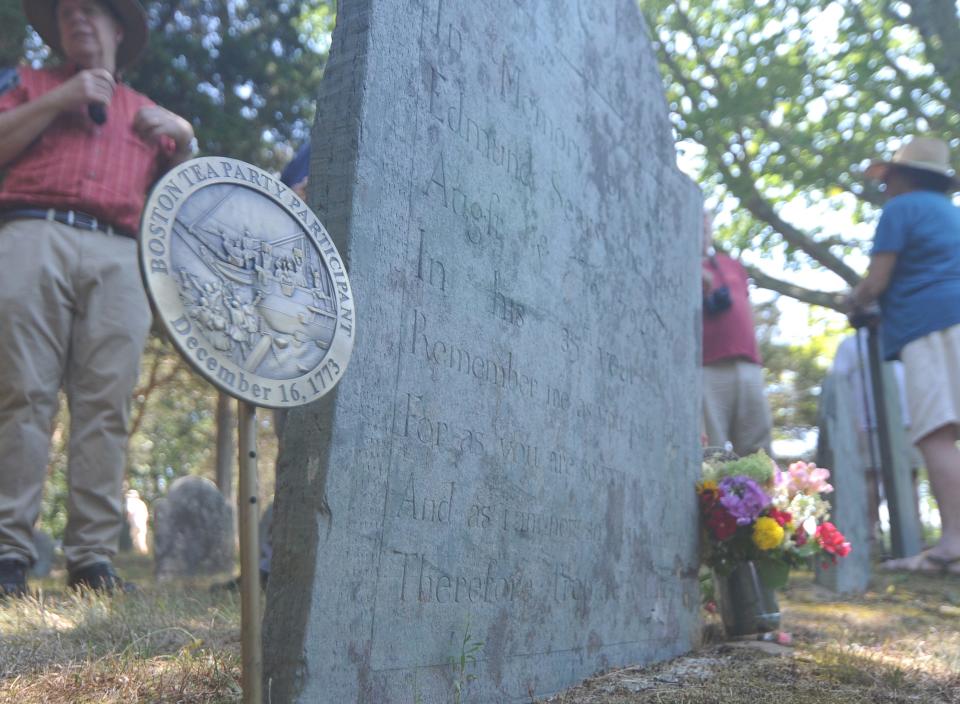When tea was big trouble: Ship bound for Boston Tea Party wrecked on Cape Cod in 1773
I was sipping a cup of Earl Grey and reading the latest edition of "Ripping Tea Yarns," when I realized that history was about to pass me by.
The 250th anniversary of the Boston Tea Party was already on the boil, with all sorts of commemorative programs on Cape and a splashy reenactment slated for Dec. 16 at the Boston Tea Party Ships & Museum.
This made me wonder: was there any connection between Cape Cod and the big tea dump in Boston in 1773? First, I had to figure out what the Boston Tea Party was all about.
According to the National Park Service, "in 1773 (the British Parliament) granted the struggling East India Company a monopoly on tea sales in North America. The Tea Act made East India Tea cheaper than smuggled Dutch tea, increased sales and helped the government collect a tax on the tea. For many Americans, the idea of a failing corporation receiving a bailout from a government that did not grant colonists any say in the matter represented yet another overstep by British Parliament."

Trouble brewed along the Eastern Seaboard in the fall of 1773 as East India Company ships began arriving in ports that included New York, Philadelphia and Charleston.
But the dunk heard round the world happened in Boston, on Dec. 16, 1773, when "dozens of disguised men, some as Indigenous Americans, boarded the three East India Company ships and dumped 342 chests of tea into Boston Harbor," according to the National Park Service.
I was gobsmacked to learn that some of the tea that would otherwise have been tossed into Boston Harbor in 1773 ended up on Cape Cod. According to "The Ship That Missed the Tea Party," a fascinating article on the Boston Tea Party Ships & Museum website, the William, one of the four tea ships bound for Boston, was thrown off course by a storm.
The storm "ran the vessel upon the rocks off Cape Cod and, the next day, a second storm sealed its doom. The crew was forced to cut anchor, and the ship was lodged firmly onshore near Provincetown," according to the article.
The tea on the ship was political dynamite.
Historian Mary Beth Norton published an in-depth account of the subsequent events on Cape Cod in the William and Mary Quarterly in 2016. According to the abstract of the article, "the presence of thousands of pounds of salvaged, untaxed tea created significant divisions among local residents."
According to Norton, the "first official to reach the scene of the shipwreck on Cape Cod was John Greenough, a Barnstable County justice of the peace based in Wellfleet." Greenough was acquainted with the family that owned the William, and put together a work party to take the tea and other cargo off the ship.

Finding ships to take the non-tea cargo to Boston was easy. The tea was a different story. Plans were made to take the tea to Castle William, located on Castle Island in Boston Harbor, where British troops were stationed, but it appeared that few wanted the job.
According to a passage from Norton, who quotes historical sources, "Truro captains whose vessels lay idle in Provincetown harbor indignantly rejected 'the infamous employment' of carrying the tea despite being promised 'a large reward.'”
Eventually, a ship from Salem brought most of the tea to Castle William. According to the Journal of the American Revolution, the tea may have eventually been sold at auction.
A smaller portion of the salvaged tea remained on the Cape, where disagreements over what should be done with it caused "months of conflict," according to Norton.
The abstract of Norton's article sums up the turmoil this way: "Townspeople assembled in competing meetings; mobs ransacked homes for concealed tea; other mobs threatened town officials as the militia mustered in their defense; arguments over principles divided residents of Wellfleet and Eastham."
Eventually, ruffled feathers were smoothed. Some of the Cape tea was sold, though some had been destroyed. And there were bigger fish to fry: the American Revolution was looming on the horizon.
Eric Williams, when not solving Curious Cape Cod mysteries, writes about a variety of ways to enjoy the Cape, the weather, wildlife and other subjects. Contact him at ewilliams@capecodonline.com. Follow him on X: @capecast.
Thanks to our subscribers, who help make this coverage possible. If you are not a subscriber, please consider supporting quality local journalism with a Cape Cod Times subscription. Here are our subscription plans.
This article originally appeared on Cape Cod Times: Ship bound for Boston Tea Party wrecked on Cape Cod in 1773

